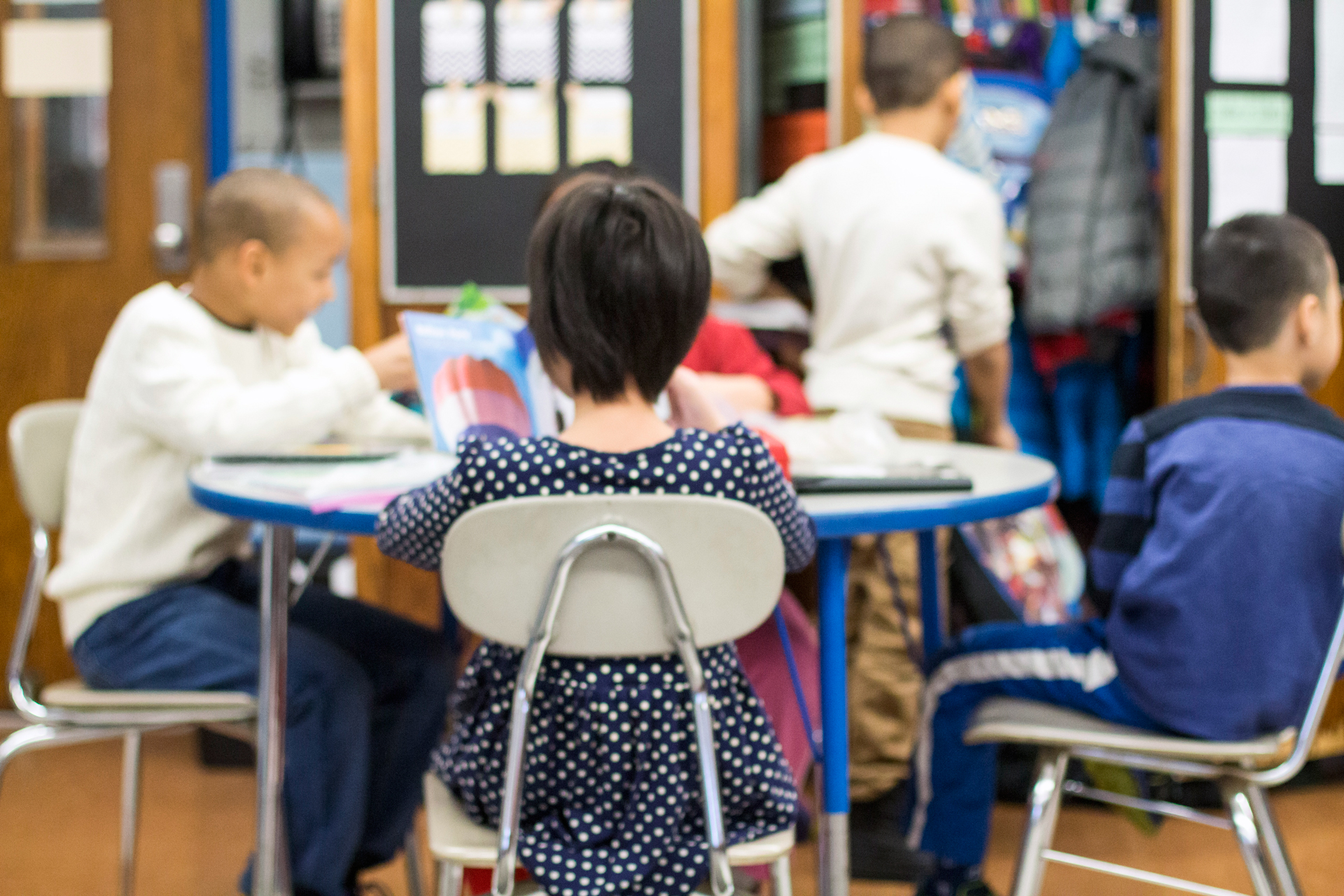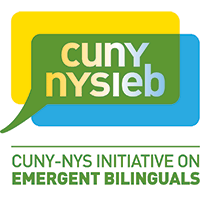Our Vision
Students who speak languages other than English and who are learning English at school are commonly referred to as “English Language Learners.” We prefer the term emergent bilinguals because it acknowledges the ways these students draw on rich home language practices as they learn, and because it places their bilingualism at the center of our understandings of their needs and strengths. The primary focus of the CUNY-NYSIEB project is to improve the educational outcomes for emergent bilinguals. It is our stance that for schools to be successful at meeting the needs of emergent bilingual students they must develop ecologies of bilingualism that build on the home language practices of their students.


We consider bilingualism the desired norm for all American students and not as the exceptional quality of a few. That is, we view bilingualism and biliteracy as an asset that all students in New York State should possess to meet the demands of the 21st century. Our use of the term emergent bilinguals conceptualizes linguistically diverse students as much more than learners of English. As they learn, they draw on rich home language practices. The education of these students must go beyond simply English language learning, to incorporate a challenging curriculum in the content areas that also meets their social and emotional needs.
We believe that bilingual development is not linear but dynamic — dependent on the relationship of speakers with other people and texts, as well as their relationship with the learning environment. What bilingual speakers do is translanguage, or make use of their full linguistic repertoires — including features from multiple languages — in order to make meaning from the complex interactions that are enacted by different human beings and texts in our globalized world. Bilingual students translanguage to meet communicative and academic needs in standard English and other languages, and to learn challenging new content.
Vision statement
Emergent Bilinguals: Emergence, Dynamic Bilingualism, and Dynamic Development
Emergent Bilinguals
CUNY-NYSIEB focuses on improving the education of emergent bilingual students in New York State. These students are often referred to as English Language Learners. In New York State they are designated as such by the Language Assessment Battery-Revised (LAB-R) initially, and the New York State English as a Second Language Achievement Test (NYSESLAT) thereafter.
We refer to these students as emergent bilinguals because, in learning English, they are becoming bilingual and thus joining the growing ranks of American bilinguals in New York State and elsewhere. We consider bilingualism as the desired norm for all American students and not as the exceptional quality of a few. That is, we view bilingualism and biliteracy as an asset that all students in New York State should possess to meet the demands of the 21st century. Furthermore, our use of the term emergent bilinguals conceptualizes these students as much more than learners of English only, since they are developing proficiency and literacy in academic English from the base of home language practices. Furthermore, the term emergent bilinguals acknowledges that the education of these students must go beyond simply English language learning, to include a challenging curriculum in the content areas that also meets their social and emotional needs.
Emergence
In focusing on the emergence of the students’ bilingualism, we are naming our educational philosophy regarding language and literacy development, as well as education. This philosophy holds that bilingual development is not linear but emergent, and that it is dependent on the relationship of students with other people and texts, as well as their relationship with the learning environment. Under this philosophy, educators must provide the affordances and opportunities that are needed for new language practices and understandings to emerge. In this view, a speaker never has a language, but simply uses or performs a language. It is when the right affordances are provided that student languaging emerges, as students also construct new knowledge and understandings.
Dynamic Bilingualism
This emergent view of language and literacy education is consonant with our view that bilingualism is dynamic, and not simply additive. In our global world, bilingual practices reflect the language user’s adaptation to specific communicative situations and to the communicative resources provided by others. A bilingual speaker is thus never a fully balanced bilingual. Rather, what bilingual speakers do is to language bilingually, or to translanguage, in order to make meaning from the complex interactions that are enacted by different human beings and texts in our globalized world. Translanguaging refers to the use of a learner’s full linguistic repertoire to make sense of the rich content that is being communicated. In this dynamic bilingualism view, new language practices only emerge in interrelationship with old language practices. Together they constitute a flexible linguistic repertoire that bilingual students use in order to meet their communicative and academic needs, including literacy in standard academic English and the learning of challenging new content.
Dynamic Development
The dynamism of the fluid language practices performed by emergent bilingual students leads us to shed rigid distinctions between native or first languages and second languages, distinctions that have tended to obscure thinking about bilingualism, bilingual acquisition, and language education. For example, we reject the common proposition that is so common in “second language” acquisition studies that emergent bilingual students have a “first” language that is used solely at home and that, depending on one’s position, needs to be shed or maintained, plus a “second” language, namely English, that is used in school.
Instead, we assert that the language practices of American bilingual children include, flexibly and simultaneously, features of languages other than English, as well as English. Our educational philosophy engages bilingual children with their entire range of language practices, including those associated with academic English, as their very own. For bilingual children to successfully perform academically in English, schools support a multilingual context that recognizes the language and cultural practices of bilingual children as an important part of the school’s learning community.
CUNY-NYSIEB Principles and Practices: Carrying out Emergence, Dynamic Bilingualism and Dynamic Development 2011-2016
From 2011-2016, a core component of the work we did at our partner schools across New York State was leadership development. We hosted seminars for principals and school/district personnel which explored practices that viewed bilingualism as a dynamic practice and as a resource to be used in classrooms and schools. We also believe in empowering teachers as language policy makers and champions of emergent bilingual students, and our team provided coaching to support them as they implemented new strategies.
We also disseminated materials developed throughout the initiative, documented historical and current practices for emergent bilinguals, and supported New York State Education Department in the development and implementation of the Bilingual Common Core Initiative.
Schools that adopt the CUNY-NYSIEB dynamic bilingual philosophy provide opportunities for students’ new language practices and understandings to emerge. They adhere to two principles and practices: (1) a multilingual ecology for the whole school, and (2) bilingualism as a resource in education.
1. Support of a multilingual ecology for the whole school
Under this philosophy, the entire range of language practices of all children and families are evident in the school’s textual landscape, as well as in the interactions of all members of the school community. That is, in addition to English, the other languages of the school are visible and palpable, represented in signs throughout the school, in texts in the library and classrooms, and heard throughout in conversations. Furthermore, the students’ language practices and cultural understandings are used in all classrooms as resources for deeper thinking, clearer imagining, greater learning, and academic languaging. This extends beyond the language practices of emergent bilinguals to include those of all students.
2. Bilingualism as a resource in education
Regardless of program structure; that is, whether the program is called English as a new language (ENL) or Dual Language Bilingual Education (DLBE), the home language practices of emergent bilingual students are not only recognized but leveraged as a crucial instructional tool and, to the greatest extent possible, nurtured and developed. The entire linguistic repertoire of emergent bilingual children is used flexibly and strategically in instruction in order to engage the children cognitively, academically, emotionally and creatively. Accordingly, all educators, whether they are general education, ENL or bilingual teachers, build upon the students’ home language and cultural practices in instruction in strategic ways, as essential tools for language learning and education in general.
In embracing these CUNY-NYSIEB principles and practices, schools cast away the monolingual and monocultural ideologies of the past that have limited the ability of schools to meet the academic, emotional and social needs of emergent bilinguals. Instead, schools support the emergence of students’ dynamic bilingual development in order to become fully educated.
